Original author: @samcallah
Original translation: Vernacular Blockchain

I looked at the 13 F filings and by my count, there were 1,573 institutions holding long positions in Bitcoin in the fourth quarter of 2024.
These institutions include banks, hedge funds, registered investment advisors (RIAs), family offices, endowments, pension funds, sovereign wealth funds and other asset managers. Here are some key findings:
1. What is a 13F file?
Before we dive in, I want to clarify what exactly a 13 F filing is. Every quarter, large investment firms with more than $100 million in assets under management must file a 13 F filing with the U.S. Securities and Exchange Commission (SEC) to disclose their holdings of U.S. stocks and stock-related assets such as ETFs, REITs (real estate investment trusts), options, and convertible bonds.
It is important to note that 13F filings only include institutions’ long positions in U.S. stocks and equity-related assets.
Therefore, it excludes the following assets: bonds, real estate, commodities, precious metals, raised investments (such as hedge funds, venture capital, etc.), futures, spot Bitcoin, cash, foreign stocks/currencies, and short positions.
Therefore, 13F filings do not fully reflect an institution’s entire investment portfolio.
We have no way of knowing the institution’s holdings in other asset classes, nor can we determine whether a long position is simply used to hedge a short position elsewhere.
I emphasize this because I will discuss the size of Bitcoin holdings in these 13 F filings below. But please note that these data only reflect the allocation of institutions in US stocks and related assets.
In reality, these institutions’ Bitcoin holdings may be smaller than shown in the report, provided they also invest in other asset classes.
A great example is the Abu Dhabi sovereign wealth fund’s recent disclosure of its holdings in $IBIT (iShares Bitcoin Trust), one of the most exciting 13 F filings to date.
In this filing, Bitcoin is the funds second largest holding, with an exposure of approximately $437 million.
But here’s the kicker… The AUM disclosed in the 13F filing was only $20 billion, while the fund’s actual total AUM was a whopping $302 billion. In other words, the 13F filing’s holdings only accounted for about 6.6% of the fund’s total assets.
This makes sense, as the fund invests in multiple asset classes around the world, far beyond just the U.S. stock market.
Therefore, Bitcoin actually accounts for only 0.1% of its total portfolio, not 2.1%. But even so, this is still a very positive development.
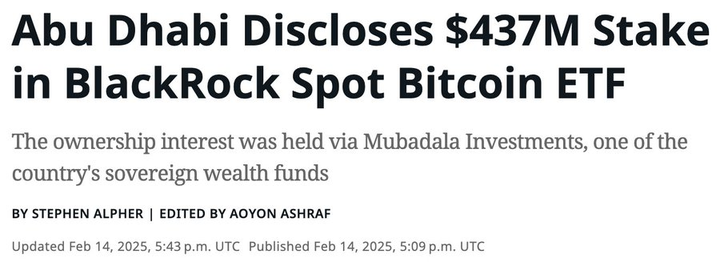
With this in mind, the median Bitcoin holdings across all institutions in these 13F filings are just 0.13%.
This is a very small percentage… but a positive sign. This shows that Bitcoin adoption among institutions is still in a very early stage. It is worth reminding that BlackRock recently recommended allocating 1-2% of assets to Bitcoin.
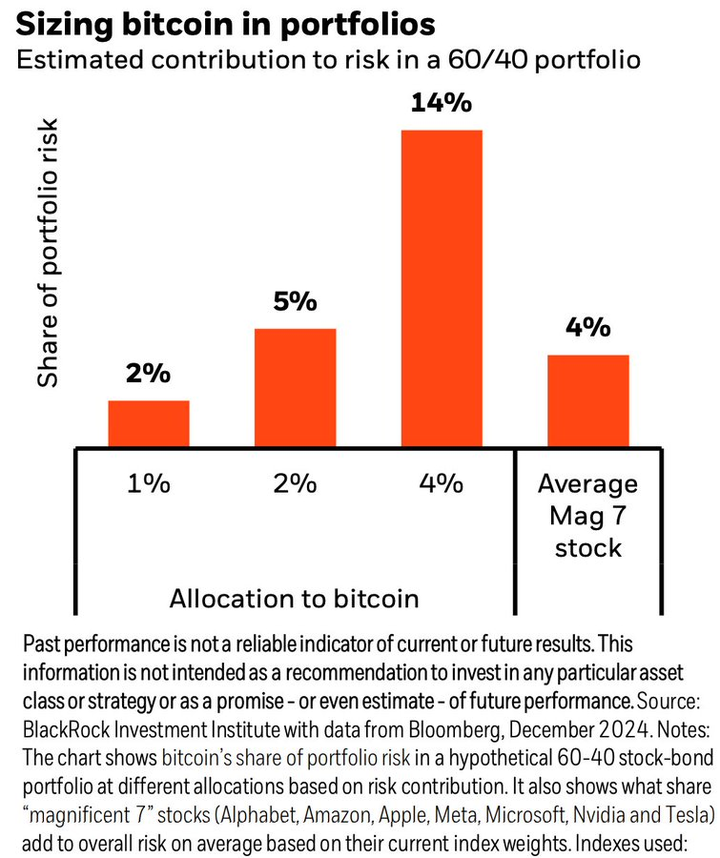
But among these investment companies, a few institutions have a significantly higher Bitcoin allocation ratio than their peers. Coincidentally, their managers are all top asset management experts in the industry with proven outstanding investment performance.
2. Information worth noting
Here are some of the most notable 13 F filings that deserve special attention…

1) Horizon Kinetics
Horizon Kinetics’ second largest position is Bitcoin (16.16%), with an exposure of about $1.3 billion. The firm is led by one of the most prominent figures in the investment community, Murray Stahl. In its Q4 2024 review, the firm explained why they did not rebalance their Bitcoin position.
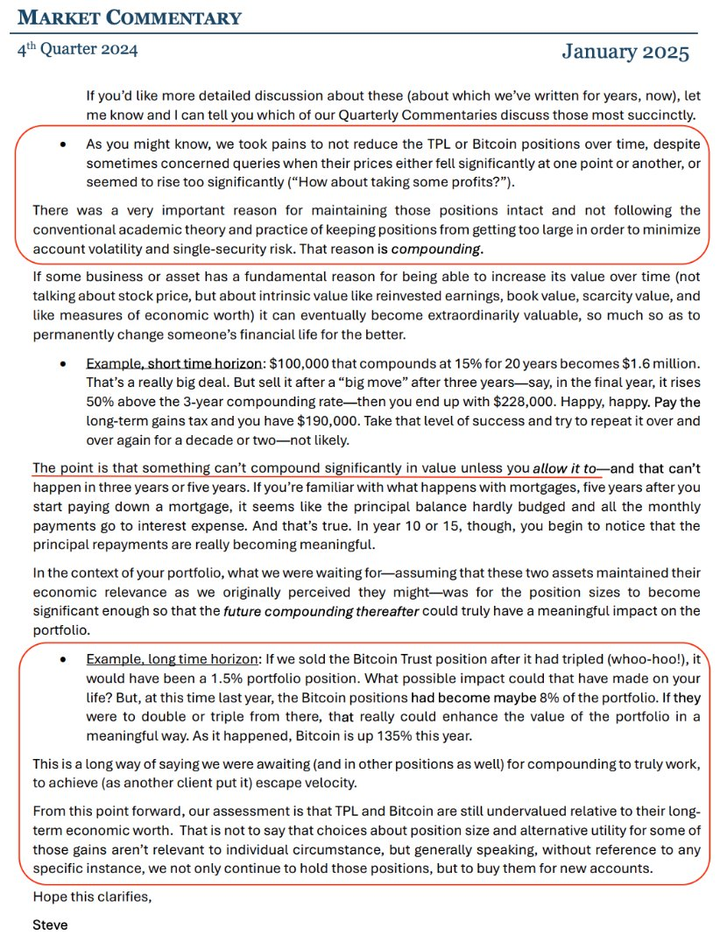
2) Bracebridge Capital
The company’s largest holding is Bitcoin (23.6%), with an exposure of approximately $334 million.
Bracebridge Capital, led by Nancy Zimmerman, manages assets exclusively for foundations, pensions, high net worth individuals (HNWIs), and is responsible for managing a portion of the portfolios of two of the best performing endowments of the past 20 years: Yale University and Princeton University.
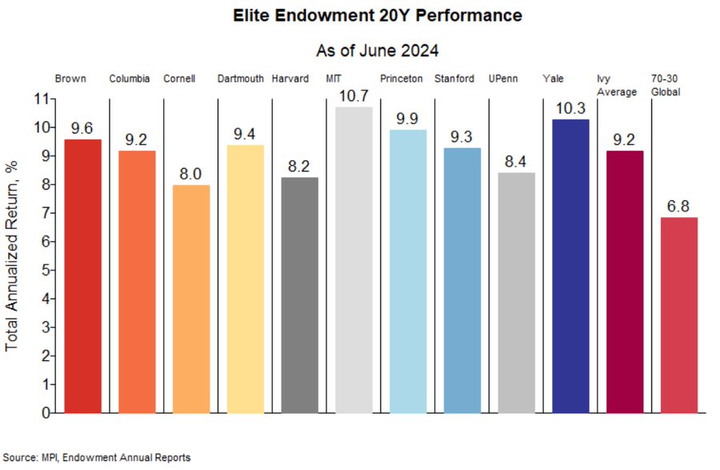
3) Tudor Investment Corp
Tudor’s largest holding is Bitcoin (1.625%), with an exposure of approximately $436 million. This filing made some headlines and is indeed worth noting.
Paul Tudor Jones is one of the greatest investors of this generation. Last month, he also talked about why he still holds Bitcoin.
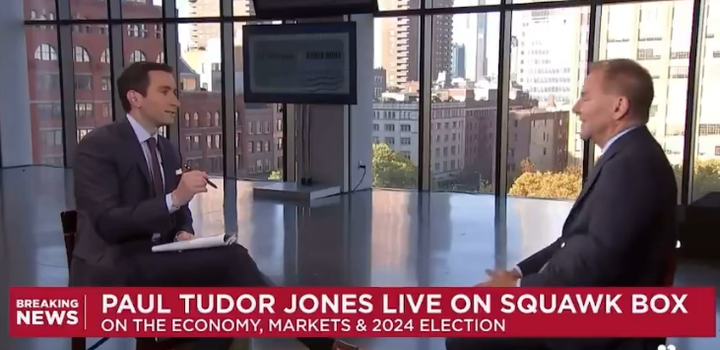
4) Fortress Investment Group
The companys fourth largest holding is Bitcoin (11.2%), with an exposure of approximately $70 million. It is worth noting that Abu Dhabis sovereign wealth fund (Mubadala) acquired 68% of Fortress shares last year and became its controlling shareholder.
So, in reality, this is just a further step for the UAE to invest in Bitcoin.
5) Brevan Howard
The companys second largest holding is Bitcoin (8.74%), with an exposure of approximately $1.4 billion. Brevan Howards team has been a staunch supporter of Bitcoin for many years, and this large macro hedge fund clearly understands the art of long-term holding (HODLing).
Bitcoin plunged 50% in the 2022 bear market, but billionaire Alan Howard remained firm in his view…

6) Discovery Capital Management
The firm’s fifth-largest holding is Bitcoin (4.6%), with an exposure of about $68 million. Discovery is led by Robert Citrone, who has worked with Julian Robertson and George Soros and is a minority shareholder in the Pittsburgh Steelers.
He once explained why he is interested in Bitcoin.
7) Jericho Capital
The firms fifth-largest holding is Bitcoin (5.4%), with an exposure of approximately $378 million. Jericho is led by Josh Resnick, and the funds growth trajectory is quite impressive - from $36 million in 2009 to more than $7 billion in assets under management today.
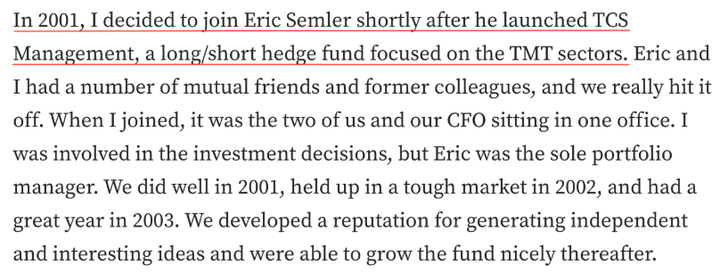
8)Hudson Bay Capital Management
The company holds a 0.15% Bitcoin position, with an exposure of about $44 million. But what’s really interesting is not this position, but the fact that the notorious Bitcoin short Nouriel Roubini is actually a senior advisor to the company.
Good thing they didn’t listen to his Bitcoin advice!

9) State of Wisconsin Investment Board
The big news here is that the state’s pension fund more than quadrupled its Bitcoin holdings in the final quarter.
Q2: $99 million, 2,898,051 shares (0.26%)
Q3: $104 million, 2,889,251 shares (0.26%)
Q4: $321 million, 6,060,351 shares (0.82%)
Increase your position to win!

10) State of Michigan Retirement System
But Wisconsin isn’t the only state to increase its Bitcoin holdings — a Michigan pension fund has also nearly doubled its Bitcoin holdings.
Q2: $6.6 million, 110,000 shares (0.03%)
Q3: $6.9 million, 110,000 shares (0.03%)
Q4: $9.3 million, 100,000 shares (0.05%)
Still small, but growing!
11) Emory University
The university’s second largest holding is Bitcoin (32.3%), with an exposure of approximately $22 million. The endowment’s Bitcoin holdings remained unchanged from the previous quarter, meaning that despite a roughly 50% increase in Bitcoin prices, they did not actively adjust their holdings.
Emory University chose to continue holding (HODL).
12) Pine Ridge Advisors
The firm’s second largest holding is Bitcoin (18.4%), with an exposure of approximately $209 million. I don’t know much about this firm, but I mention it because its Bitcoin allocation is quite concentrated for a family office of this size.
By the way, this is their entire website interface - so you know they are indeed legit.

13) Capula Management
The firm’s second-largest holding is Bitcoin (5.4%), with an exposure of about $936 million. The fourth-largest hedge fund in Europe is led by Yan Huo, formerly the head of JPMorgan’s fixed income trading desk.
Their investment strategy is innovative and low-correlated investing, no wonder they are long Bitcoin.
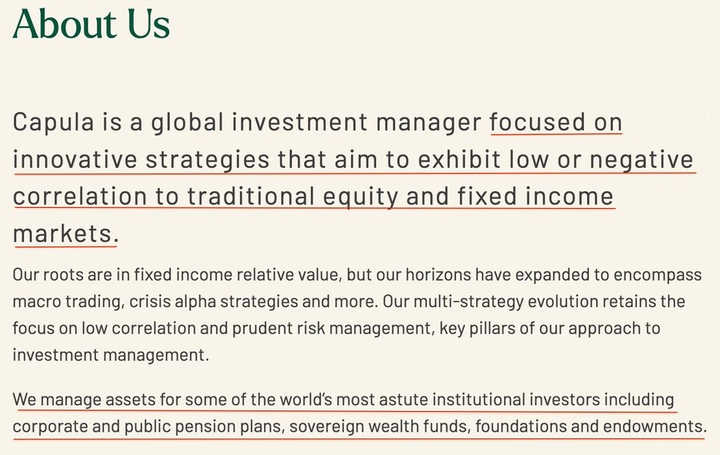
14) Cresset Asset Management
Bitcoin has become a top 30 holding of Cresset, one of the largest and leading independent registered investment advisors (RIAs) in the United States. Cresset has been increasing its Bitcoin holdings every quarter:
Q2: Holdings of $33.7 million (0.14%)
Q3: Holdings of $53.9 million (0.21%)
Q4: Holdings of $107.5 million (0.51%)
This is worth watching to gauge the investment trends of its financial advisors (FAs) in Bitcoin.

You may have noticed that I didn’t mention some of the well-known institutions that hold large amounts of Bitcoin ETFs, such as:
Millennium ($2.6 billion, 1.28%)
Jane Street ($2.4 billion, 0.52%)
Susquehanna ($1 billion, 0.16%)
DE Shaw ($869 million, 0.64%)
Citadel ($446 million, 0.08%)
Point 72 ($155 million, 0.34%)
This is because these institutions are mainly quantitative funds and market makers. Their algorithms do not care what the underlying asset is, whether it is IBIT, META, GE, SPY or TLT, they are just looking for arbitrage opportunities and market inefficiencies.
Therefore, they are not long-term holders, and I speculate that many institutions’ Bitcoin positions are likely net-neutral, which makes their exposure less interesting to me.
That being said, I still appreciate their trading activities in the market. Their participation improves market efficiency and makes the market run more smoothly by narrowing bid-ask spreads, deepening order books, and improving liquidity.
The same applies to some of the large banks that hold Bitcoin ETFs:
JPMorgan: $964,000 (0.0001%)
Goldman Sachs: $2.3 billion (0.37%)
Wells Fargo: $375,000 (0.0001%)
Bank of America: $24 million (0.002%)
Morgan Stanley: $259 million (0.02%)
Banks such as JPMorgan Chase are authorized participants (APs) for many Bitcoin ETFs, and also act as market makers. It is completely normal for APs to hold some ETF shares on their balance sheets, as they are responsible for creating and redeeming ETF shares.
Market makers also need to hold a certain number of ETF shares in order to better provide liquidity, promote market transactions, improve pricing efficiency, and ensure the accuracy of ETF prices.
In addition, banks are currently subject to regulatory restrictions from the Federal Reserve, which prohibits them from holding Bitcoin on their own balance sheets on a proprietary basis. The specific regulations can be found in this official document: Federal Reserve Statement.
However, with the revocation of SAB-121, the regulatory environment is changing. Among these banks, Morgan Stanley stands out the most - in August last year, it became the first major bank to allow financial advisors to recommend Bitcoin ETFs to clients.
Goldman Sachs has also been active, offering Bitcoin exposure to high net worth clients through its asset management division for years. But if its trading desk holds Bitcoin, I suspect it is more likely running market neutral arbitrage strategies (such as basis trades), that is, it is not truly net long.
As banking regulation evolves, how these large banks adjust their Bitcoin holdings and expand their participation in the Bitcoin market in the coming quarters will be a trend worth watching closely.
This point deserves special attention.
3. Summary
Overall, these 13 F filings show that Bitcoin is gradually becoming an institutional-grade asset. At present, the market size and liquidity of Bitcoin are large enough to accommodate these institutional investors.
As new investment tools continue to be launched, these institutions will have more ways to gain exposure to Bitcoin, and institutional adoption will accelerate.
I’ve introduced some of the early institutional investors in Bitcoin in this post, but the trend is still in its very early stages, which means there are still huge opportunities in the future.
Institutional investors who manage trillions of dollars are still only scratching the surface and have just begun to get involved in the Bitcoin market. According to my research: Among the 8,190 13 F filings last quarter, only about 19% of institutions disclosed long positions in Bitcoin. As more institutions enter the market, or existing institutions increase their allocations, the inflow of funds into Bitcoin will drive its price up and even completely change its investor structure.










